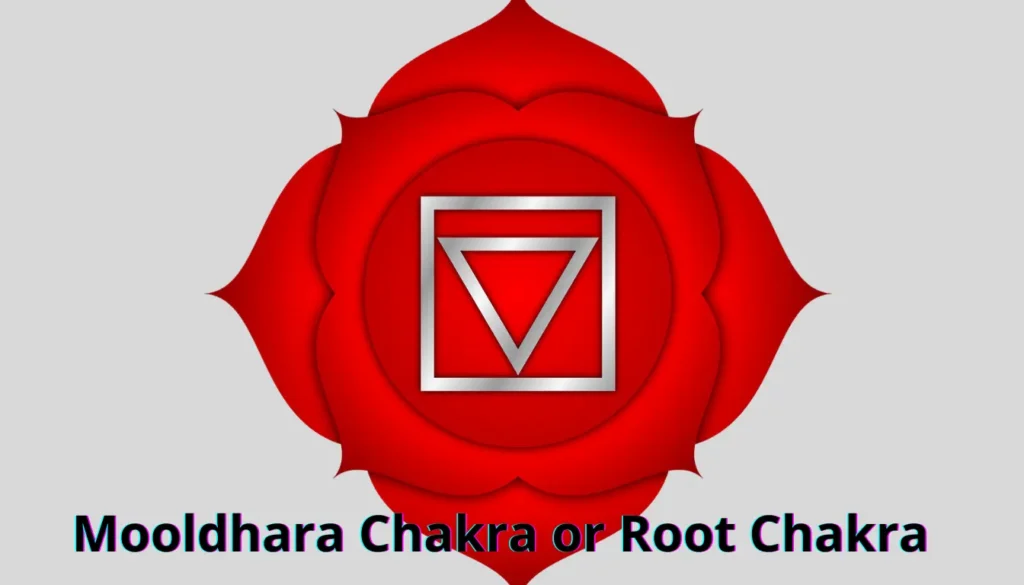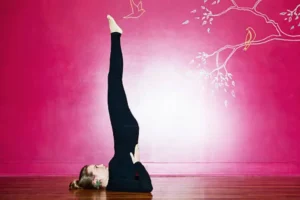Root Chakra is a “hand gesture” or “hand sign” to stimulate and balance the root chakra. “Muladhara” translates to “foundation,” which is responsible for a person’s stability and grounding in life. According to yoga teachings, this mudra is called the goddess Sakini, which is linked with the root chakra. She embodies powerful, golden life energy in the pelvic region at the base of the spine. Ancient tantric texts, including Tantar Sadhana and Yogini Hridaya, also reference this. These scriptures state that the Yogini energy supports our physicality with its blessings and dwells within our inner selves.
The root chakra is located in the perineum, situated between the anus and the genitals. It serves as the body’s foundational energy center and is the basis of the physical body and energy systems. Yoga scriptures depict the root chakra as a flower with four petals.
Practicing Muladhara Mudra helps individuals connect with Earth’s energy. Just as a tree requires strong roots for growth, our physical development and maintenance are directly linked to this Chakra.
What is the Root chakra?
The root chakra is also known as existence, stability, aspiration, and self-reliance because when this Chakra is unbalanced, our ambitions and goals become unstable, and we start feeling frustrated. When the Root chakra is balanced, a person’s negative feelings turn into positive feelings, frustration turns to hope, power turns into stability, and the person starts feeling energetic and self-confident.
What are the Characteristics of Root Chakra?
Colour– Red
Element– Earth
Position -It is located based on the spinal cord and above the anus.
This is the first Chakra in the human cycle. This Chakra is inseparably related to the physical body of man. The spiritual journey of the soul begins with the fear of man. It begins from this first Chakra. This Chakra marks the boundary between human and animal consciousness. It is related to the subconscious mother, where the karma and memories of past humans are stored. This Chakra has two possibilities. Its first natural possibility is sexual intercourse. The second possibility is celibacy, the glory of which is achieved through meditation. Sexual intercourse is a natural possibility, and celibacy is its transformation. The mantra of the Root chakra is the mantra of this Chakra.
What symptoms of imbalance of Root Chakra?
- Lack of energy: If you remain tired all day, your Root Chakra is disturbed.
- Obesity or leanness Root chakra represents the earth element. If you are overweight, it means an excess of the Earth’s elements. It means.
- Overeating or dying of hunger.
- Talking about the world If a person keeps talking about the world, then the Root chakra of such a person is disturbed. If you do not want to come out of your shell and do not want any change in your life, then know that your Root chakra is disturbed.
- Feeling insecurity or fear and lack of concentration or focus when concentration gets disturbed.
- Getting addicted to any intoxication or addiction.
5 ways to balance Root chakra
- Walking barefoot on grass or smooth earth surface, the touch between the foot and the ground can activate the energy of your Root chakra. In villages in India, people make the ground smooth; they will always be in touch with the Earth’s elements. Their energy level will be so high that they will do a good amount of physical labour, yet they will never get tired, so touching your foot on the ground, walking smoothly on the ground, is one of the most important activities we should do.
- Asanas that compress and stretch the lower spine will help release energy and relax the whole area around the Root chakra. They also remove blockages from the Root chakra. Asanas like Sukhasana, Malasana, Janu Shirshasana, and Dhanu Vakrasana should be done regularly.
- Ashwini Mudra is an excellent practice for activating your base. The exact technique to practice this Ashwini Mudra would be either you sit in Sukhasana with your spine straight and relaxed, or you lie down on your back in a Pranayama position, now first breathe in fully, exhale fully, draw your abdomen in and simultaneously tighten your anal muscles and pull your muscles upwards.
- Stay in this position for 10-15 seconds as long as you can hold your breath and then relax the muscles, and then breathe out, so do this over and over again, and you will master this technique, either sitting or lying down and you will notice activity in that area.
- Focus your mind in that area, and once the mind is focused in that area, the energy flows
What are the benefits of Root Chakra?
- Beyond its physical benefits, this mudra also enhances the thought process. Yoga instructors may include this practice in gentle, elemental Chakra balancing sequences or mindfulness within Kundalini yoga.
- Regular practice of this mudra promotes a healthy urogenital system. It aids in the efficient expulsion of waste from the excretory system while ensuring the effective functioning of the genitals, anus, and rectum. The sexual organs function optimally, and issues related to reproduction in both men and women can be addressed through this practice. Conditions such as erectile dysfunction, premature ejaculation, and vaginal dryness can be alleviated.
- All pain, discomfort, and cramps in the feet, legs, and lower back are often associated with imbalances in the root chakra, and this mudra helps activate it. Women experiencing menstrual issues, such as painful or irregular periods, may notice a change in their cycles due to this practice. It can also address women’s health concerns like osteoporosis and menopause. Pregnant and postpartum women can benefit from this mudra as it strengthens the base of the spine.
- This mudra regulates the parasympathetic nervous system and the sciatic nerve. Students suffering from lower back and tailbone pain (coccydynia) may find relief through this practice.
- People of all ages, including seniors, adults, and teenagers, can practice this mudra.
Spiritual and Mental Benefits
- This practice fosters a sense of safety and confidence while promoting positive thinking. The primary goal of this mudra is to ensure stability and a grounded presence. Those looking to establish a family and lead a stable life tend to maintain a balanced root chakra. This mudra assists individuals in making practical decisions related to their daily activities.
- While stimulating sexual thoughts is part of human anatomy, this mudra helps balance these impulses with healthy limits. It encourages a focused, stable, and practical approach to all areas and aspects of an individual’s life.
- Although minimal contraindications exist for this mudra, some practitioners should exercise caution before engaging in it. Students who are lethargic or avoid taking risks or challenges should refrain from this practice, as the grounding effect may enhance their sluggishness and dull routines.
- Additionally, students who have recently undergone surgery on their wrists or fingers should avoid this mudra, as any pain in the hands could distract from mental focus and attention.
Conclusion
When the Root chakra is active, energy flows freely, making you feel safe, connected, and confident. when the Root chakra is out of balance or impaired, it creates feelings of nervousness and anxiety. Therefore, it is crucial to keep the Root chakra stable and balanced. We can balance it with yoga practice








